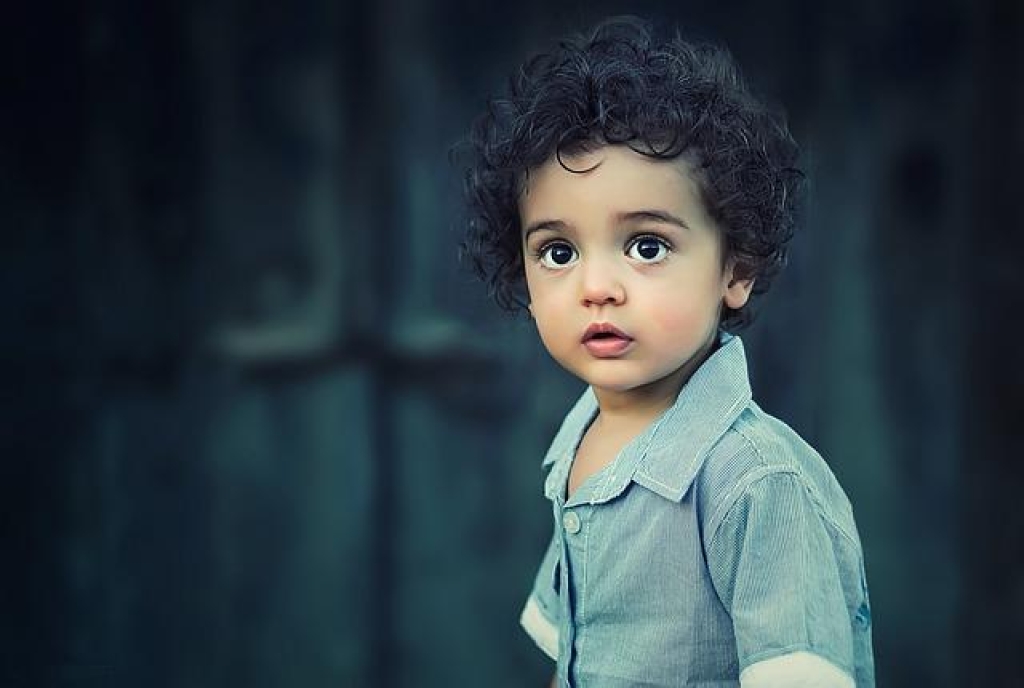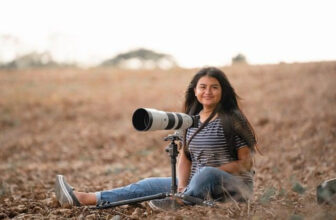Capturing the perfect shot: Tips for kids photography
GoogleAds

In a world where smartphones and digital cameras are ubiquitous, the art of photography has become more accessible than ever. As children immerse themselves in this creative medium, capturing the perfect shot can become a rewarding and fulfilling experience. From candid moments to carefully composed portraits, children have a unique perspective that can result in stunning photographs. In this article, we will explore some tips and techniques for kids photography, helping young shutterbugs hone their skills and create beautiful images.
Planning ahead: Setting the scene for a successful photoshoot
When it comes to kids photography, planning is key to achieving the perfect shot. Setting the scene for a successful photoshoot requires careful consideration of various factors. From choosing the right location to preparing your gear, every detail matters in capturing those precious moments.
One important aspect to consider is the time of day for the photoshoot. Natural light plays a crucial role in photography, especially when it comes to capturing kids in their element. Early morning or late afternoon are ideal times for photoshoots, as the light is softer and more flattering.
Another essential tip for kids photography is to create a comfortable and fun environment for the little ones. Bring along their favorite toys or snacks to keep them engaged and happy during the shoot. This will not only help in getting natural and candid shots but also make the experience enjoyable for the kids.
It’s also important to communicate with the parents beforehand to understand their expectations and preferences. Discussing the theme, outfits, and poses can help in aligning everyone’s vision for the photoshoot. This will ensure a smooth and successful session with beautiful results.
Lastly, don’t forget to be patient and flexible during the photoshoot. Kids can be unpredictable, so be prepared to go with the flow and capture the magic moments as they happen. Remember, a relaxed and fun atmosphere will always result in the best photos!
 subject: Building rapport and gaining trust”>
subject: Building rapport and gaining trust”>
Engaging with your young subject: Building rapport and gaining trust
When it comes to capturing the perfect shot of a child, building rapport and gaining trust is key. Kids can be shy or unpredictable in front of the camera, so it’s essential to create a comfortable and relaxed environment for them to shine. Here are some tips to help you engage with your young subject:
1. Be playful: Children respond well to playfulness, so try to incorporate games or activities into your photography session. This will not only help them relax but also bring out their natural expressions.
2. Get down to their level: To establish a connection with your young subject, try to lower yourself to their eye level. This will make them feel more comfortable and respected, leading to more authentic and candid shots.
3. Use props: Props can be a great way to engage with children during a photoshoot. Whether it’s a favorite toy, a fun hat, or colorful balloons, props can help keep the child’s attention and add an element of fun to the photos.
| 4. Offer praise and encouragement: | Children love positive reinforcement, so be sure to praise them for their efforts and encourage them throughout the session. This will help boost their confidence and create a more enjoyable experience. |
5. Listen and communicate: Building rapport with a child involves listening to their needs and preferences. Take the time to communicate with them, ask for their input, and involve them in the process. This will show them that their opinions matter and help them feel more comfortable in front of the camera.
composition–lighting-and-angles“>Mastering the technical skills: Understanding composition, lighting, and angles
When it comes to kids photography, mastering technical skills is essential in capturing the perfect shot. Understanding composition, lighting, and angles can greatly enhance the quality of your photos.
Composition:
– Use the rule of thirds to place your subject off-center
- Pay attention to the background to avoid distractions
– Experiment with different angles and perspectives to create dynamic shots
Lighting:
- Natural light is your best friend, so shoot outdoors or near windows during the golden hour
– Avoid harsh overhead lighting that can cast unflattering shadows
– Use reflectors or diffusers to manipulate light and soften harsh shadows
| Composition | Lighting | Angles |
|---|---|---|
| Rule of thirds | Natural light | Experiment with perspectives |
| Avoid distractions in the background | Avoid harsh overhead lighting | Explore different angles for unique shots |
Angles:
- Get down to the child’s eye level for a more intimate and engaging perspective
– Try shooting from above to capture the child’s playful actions
– Don’t be afraid to get creative with angles to add interest to your photographs
By mastering these technical skills, you can take your kids photography to the next level and create stunning images that capture the essence of childhood. So grab your camera, experiment with different techniques, and let your creativity shine through in every shot!

Encouraging creativity: Allowing kids to express themselves through photography
Photography is a wonderful way for kids to unleash their creativity and showcase their unique perspective on the world. Allowing children to express themselves through photography can not only be a fun and engaging activity but also a great opportunity for them to develop their artistic skills.
Here are some tips to help kids capture the perfect shot:
- Encourage exploration: Let kids roam freely and explore their surroundings to find interesting subjects to photograph. Encourage them to experiment with different angles and perspectives to capture truly unique shots.
- Teach the basics: Help kids understand the basic concepts of photography such as composition, lighting, and focus. Explain how these elements can enhance their photos and allow them to communicate their vision effectively.
- Provide constructive feedback: Offer gentle guidance and feedback on their photos to help them improve their skills. Point out what they did well and offer suggestions for areas where they can grow.
| Subject | Example |
|---|---|
| Portrait | Close-up of a friend’s smiling face |
| Nature | A beautiful flower in the garden |
Encouraging kids to express themselves through photography can boost their confidence and help them develop their artistic voice. It allows them to see the world in a new light and capture moments that are meaningful to them.
Remember, the most important thing is to let kids have fun and enjoy the process of taking photos. The more they practice and experiment with their photography, the more they will learn and grow as young artists.
selecting-a-camera-and-accessories-suitable-for-children”>Choosing the right equipment: Selecting a camera and accessories suitable for children
When it comes to kids photography, selecting the right camera and accessories is crucial to ensure that children can capture the perfect shot. The equipment chosen should be user-friendly, durable, and suitable for their small hands.
One important factor to consider when choosing a camera for children is durability. Opt for a camera that is shockproof and waterproof to withstand any accidental drops or spills. This will give kids the freedom to explore and experiment without worrying about damaging the equipment.
Another key aspect to keep in mind is user-friendliness. Look for a camera that has simple controls and settings that are easy for children to understand and navigate. A camera with automatic modes can help kids focus on composition and creativity rather than technical details.
Accessories such as a sturdy camera strap, a protective case, and extra memory cards are essential additions to ensure that kids can safely carry and store their equipment. Encourage children to experiment with different accessories like fun camera straps or colorful cases to personalize their photography gear.
By carefully selecting the right camera and accessories for children, parents can empower their young photographers to hone their skills and creativity. With the right equipment in hand, kids can capture moments and memories that will last a lifetime.

Embracing imperfection: Finding beauty in candid and spontaneous moments
In kids photography, the key is to capture those candid and spontaneous moments that truly reflect the beauty of childhood. Embracing imperfection allows for genuine and authentic images that tell a story and evoke emotion. By letting go of the desire for perfection, photographers can tap into the magic of everyday moments.
One tip for capturing the perfect shot of kids is to let them be themselves. Allow them to play, laugh, and explore freely, without feeling the pressure to pose or smile for the camera. This will result in natural and unguarded expressions that are far more captivating than forced smiles.
Another tip is to get down on their level. By physically lowering yourself to their eye level, you can create a more intimate and engaging perspective. This helps to connect the viewer with the child and allows for a more immersive experience.
Utilizing natural light is essential in kids photography. Whether shooting outdoors or indoors near a window, natural light creates a soft and flattering glow that enhances the innocence and purity of childhood. Avoid harsh overhead lighting that can cast unflattering shadows.
Lastly, don’t be afraid to experiment with different angles, compositions, and editing styles. Embrace creativity and trust your instincts. Sometimes the most unexpected and imperfect shots turn out to be the most memorable and cherished. Remember, beauty lies in imperfection.

Editing and post-processing: Enhancing and refining the final images
When it comes to kids photography, capturing the perfect shot is just the beginning. After the photoshoot, editing and post-processing play a crucial role in enhancing and refining the final images. By utilizing editing techniques, you can make your photos truly stand out and leave a lasting impression.
One key aspect of editing is adjusting the exposure and lighting of the image. This can help to brighten up shadows, bring out vibrant colors, and overall improve the overall composition of the photo. By playing around with contrast, brightness, and saturation levels, you can create a more polished and professional-looking image.
Another important step in post-processing is retouching any imperfections or blemishes in the photo. Whether it’s a stray hair, a smudge on the face, or any distracting elements in the background, using tools like the spot healing brush or clone stamp can help you clean up the image and make it look more polished.
Adding creative effects and filters can also take your kids photography to the next level. By experimenting with different effects like black and white conversion, vintage filters, or selective color, you can add a unique and artistic touch to your images. Just remember to not overdo it – subtlety is key.
Ultimately, editing and post-processing are essential tools in the photographer’s arsenal for creating stunning and captivating images of kids. By taking the time to refine and enhance your photos, you can bring out the best in your subjects and create images that truly shine.
Q&A
Q: What are some tips for capturing the perfect shot when photographing kids?
A: When photographing kids, it’s important to get down to their level so you can capture their world from their perspective. Engage with them to capture natural and authentic expressions.
Q: How can you ensure children are comfortable during a photo shoot?
A: Make sure to create a relaxed and fun environment. Let kids be themselves and encourage them to play and have fun while you capture their candid moments.
Q: What are some techniques for getting kids to smile naturally in photos?
A: Play games, tell jokes, or use props to elicit genuine smiles from children. Including their favorite toys or incorporating their hobbies can also make them feel comfortable and happy.
Q: How important is lighting when photographing kids?
A: Lighting plays a crucial role in photography. Avoid harsh sunlight, which can create unflattering shadows. Opt for soft, natural light or use diffused artificial light for a more flattering look.
Q: What equipment is essential for kids photography?
A: A good camera is essential, but beyond that, having a variety of lenses, a tripod for stability, and accessories like reflectors or diffusers can help elevate your kids photography game.
Q: Any post-processing tips for enhancing kids photos?
A: Editing can enhance the quality of your kids photos. Pay attention to color correction, exposure adjustments, and sharpening to make your photos stand out. Remember to keep it natural and avoid over-editing.
Future Outlook
In conclusion, children’s photography can be a fun and rewarding experience for both the photographer and the subject. By following the tips and techniques outlined in this article, young photographers can improve their skills and capture the perfect shot. Remember to experiment, be patient, and most importantly, have fun while exploring the world through the lens of a camera. Happy shooting!
GoogleAds







